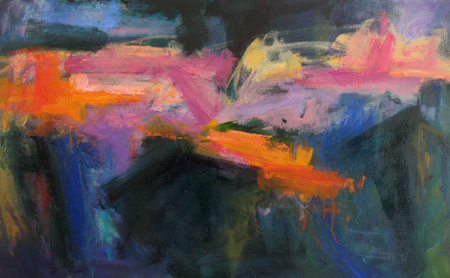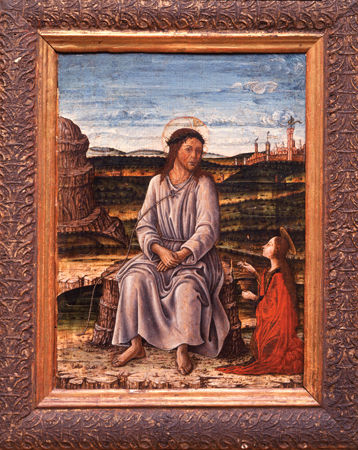I am honored to be awarded inclusion in the Georgia Museum of Art’s Kress Project this year. A panel chose 24 artists out of those who gave responses to one of the Renaissance paintings in the museum’s collection, and whose work will be published in the book.
It’s wonderful that this award includes an honoraria and I keep the painting.
Fifty years ago, the Samuel H. Kress Foundation gave a small collection of Italian Renaissance paintings to the Georgia Museum of Art as part of the foundation’s efforts to make great works of art available to the general public in museums throughout the United States. Now, in celebration of that anniversary and to further the foundation’s mission to promote interaction with great works of art, the Georgia Museum of Art announces the Kress Project.
Below is the painting, my statement with Antonio Cicognara’s painting and here is the link to their site.

“Christ, Man of Sorrows” depicts a rocky and harsh landscape, relatively empty with one lone walled town in the distance. At the time, not only were Renaissance painters imbuing landscape with a new naturalism, but symbolism became more important. As Barbara Lynn-Davis suggests in her book “Landscapes of Imagination” (1988, Princeton University Press), the landscape of the Italian Renaissance became a rarefied object. Contrasts between urban and rural environments were commonly depicted, as we see in this particular work. Christ sits in a naturalistic setting, while the city lies behind him.
The sentiment in the painting echoes my own sorrow towards the land’s demise. In the painting, Christ is depicted as a man for whom the world is a grim reminder of man’s sinfulness. The landscape is not his main concern, but in our own culture the same attitude of “forbearance” to the possible extinction of species and the rape of land by industrialists or in the name of progress, can be aligned with Christ’s towards the sinners who beat him for preaching peace, justice and equality.
I try to portray the moment between the landscape as it lives in nature and at the point of man’s destruction – or transformation – of it. The light is the one constant that we painters can at least for now, depend on.
ARTIST STATEMENT
The spell of nature and our dependence on environment is at the root of my work. The act of painting is often ecstatic, taking me beyond ordinary observation. I see colors while listening to music; heightened chroma combines with the primal force of place that informs my work. Sourcing the history of expressionism, I voice the song of dualities: emotion and formalism.
Christ, Man of Sorrows, ca. 1500
Tempera on wood
11 3/8 x 8 1/4 inches
Georgia Museum of Art, University of Georgia; The Samuel H. Kress Study Collection
GMOA 1961.1889


Congratulations.
Thanks, Terry.
Victoria,
So glad to see another painter included. My piece titled, Veiled Judgment, an oil on linen was chosen as well! Can’t wait to see the book!
Best,
Judith
Thanks, Judith. Congrats – I’m looking forward to the book as well.